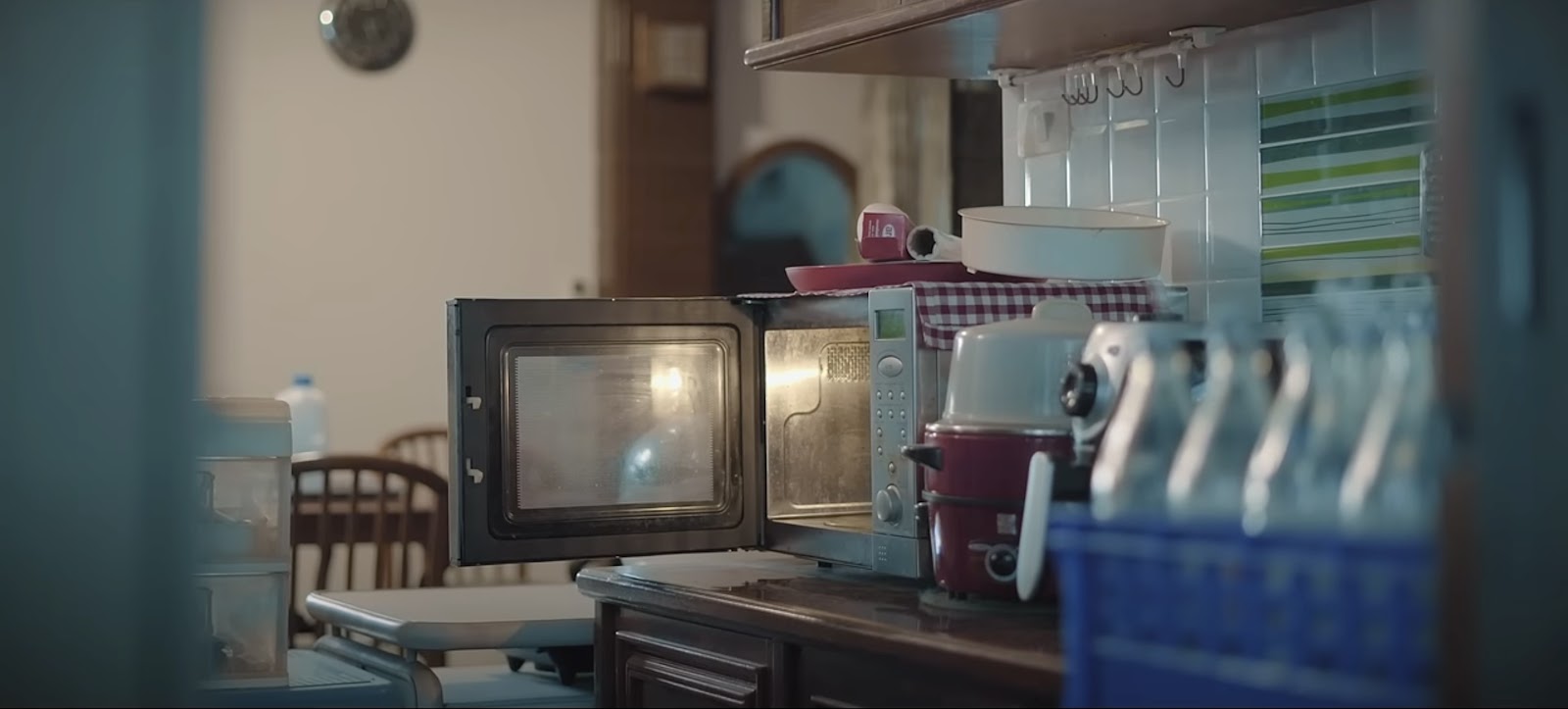'Echo' (2011)
Coursework
The cinematography in ‘Echo’ enhances the themes of the film. The juxtaposition of wide shots and intimate close ups emphasis the contrast between external environments and internal conflicts. The film opens with a long take of Caroline walking down a busy street. The protagonist seems small and isolated in the frame in comparison to the broad landscape emphasising feeling of loneliness and self-reflection which are at the heart of the narrative. The use of the close ups also helps capture Caroline’s emotional confusion which allows the spectator to connect on a deeper level with Caroline’s internal struggles. As the camera lingers on these close ups of her facial expressions it reveals the complexity of grief. The long takes, which symbolise Caroline’s on-going grief, and the overall dullness of the lighting in the film reflect how her life grows darker without her dad in it, this evokes increasing sympathy in the spectator for Caroline which was lacking in the first act of the film.
A repeating motif of reflection is explored through a use of a visual of Caroline being positioned on the wrong side of the glass. Perhaps showing how Caroline is cut off from the present world as she struggles through grief. Perhaps she is struggling to find herself in the world without her dad and struggling with her own identity. The reflections could also be encouraging Caroline to confront her past and manage her grief which the spectator hopes will be the outcome of the film.
The mise-en-scene effectively reflects Caroline’s emotional state and experiences. The settings are often a mix of harsh, bleak, and cold environments which juxtapose the warmer and nostalgic places that symbolise happier memories. The urban areas are dull and overwhelming representing the protagonists struggles in the present world in which her family is broken and forever changed. The living space appears to be comfortable and safe with the worn look and the soft sunlit in the room filled with childhood toys that evoke fond memories. Perhaps suggesting that the house is filled with happy memories that bring joy but also sadness. Objects such as photographs and personal belongings reoccur throughout the film which present the physical manifestations of memories. This reminds the spectator the emotional weight nostalgia has on individuals.
The editing has a rhythmic pace which is reflective of the flow of memories. However, at time the film used jump cuts to disrupt this rhythm and the flow of time. This could perhaps be mirroring the disjointedness of recollection. The jump cuts emphasise moments of emotional intensity as the abrupt transitions can symbolise painful recollections or realisations.
Haunting melodies are used to evoke a sense of longing and melancholy as Caroline carries on her cycle of grief and reflection. There only appear to be two moments in the film when music is actually used. The film is mainly in Caroline’s perspective of the present world, the ambient sound such as the light rustling of leaves and distant voices help the spectator fully immerse themselves in Caroline’s world but reminding us that although time moves on around us Caroline’s world is not. Silence is used to encourage the spectator to reflect on the emotional weight of Caroline’s world. When a significant memory surfaces the absence of sound draws the spectator closer to the character’s experience. This is used as Ollie rides out the garage on his bike. As the editing shifts into slow motion and all sound stops it positions the spectator to feel as though something bad might happen to Ollie. This is seen in Caroline’s perspective showing the lasting effects of the trauma of her dad’s implied death in her day-to-day life.
The narrative is made cyclical at the end when Caroline makes another phone call. However, the cinematography is completely shifted as the camera becomes handheld and shaky. It also is a lot closer proximity to Caroline and the editing becomes very choppy. The camera also uses a high angle on Carline perhaps illustrating how she is vulnerable to her own grief. These techniques immerse the spectator into Caroline’s experience and how her reality is distorted.
‘Echo’ demonstrates the power of memories and grief and how they can influence the actions of individuals in the present. Its complex characters and interesting narrative aid the themes of the film causing the spectator to reflect on how memories and trauma influence us in the present showing the complexity of grief and identity.



You have analysed film form perceptively and convincingly, and covered all the micro-elements too. There's a good understanding of how the narrative works to position the spectator as well: I really like the identification of Caz as a sort of Proppian false hero. A good start!
ReplyDelete